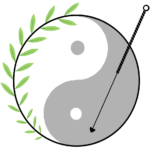Electro-acupuncture treatment of polycystic ovarian syndrome
 Polycystic ovary syndrome is a common female endocrine disorder affecting about 5% to 10% of women of reproductive age a leading causes of reduced fertility.
Polycystic ovary syndrome is a common female endocrine disorder affecting about 5% to 10% of women of reproductive age a leading causes of reduced fertility.
Researchers in Sweden studied the response to low-frequency electro-acupuncture in these women.
First, the details.
- 84 women with polycystic ovary syndrome were randomly assigned to a treatment group for 16 weeks.
- Low-frequency electro-acupuncture
- Physical exercise
- No treatment
- Changes in the concentration of testosterone at the end of the study were determined.
- In addition, changes in menstrual frequency; concentrations of androgens, estrogens, androgen precursors, and glucuronidated androgen metabolites; and acne and hirsutism were measured.
- Measurements at the end of treatment and 16 weeks later were compared to the start of the study.
And, the results.
- After 16 weeks of electro-acupuncture, circulating testosterone levels decreased 25%, androsterone glucuronide 30%, and androstane-3alpha,17beta-diol-3-glucuronide 28% in the electro-acupuncture group — significantly different changes.
- Menstrual frequency increased significantly with electro-acupuncture vs exercise at baseline.
- 16 weeks after treatment ended, the acne score decreased by 32% with electro-acupuncture vs exercise.
- Electro-acupuncture and exercise improved menstrual frequency and decreased levels of several sex steroids at the end of treatment and at the 16-week follow-up compared with no treatment.
The bottom line?
The authors concluded, “Low-frequency electro-acupuncture and physical exercise improved hyperandrogenism and menstrual frequency more effectively than no intervention in women with polycystic ovary syndrome. Low-frequency electro-acupuncture was superior to physical exercise and may be useful for treating hyperandrogenism and oligo/amenorrhea.”
There’s little research in this area. Last year, researchers at the University of New South Wales, in Sydney, Australia, reviewed the results of 4 studies and concluded, “Acupuncture is a safe and effective treatment.”
They continued, “Acupuncture therapy may have a role in polycystic ovary syndrome by: increasing of blood flow to the ovaries, reducing of ovarian volume and the number of ovarian cysts, controlling hyperglycemia through increasing insulin sensitivity and decreasing blood glucose and insulin levels, reducing cortisol levels and assisting in weight loss and anorexia.”
More research is needed to confirm these conclusions.
2/8/11 19:4 JR